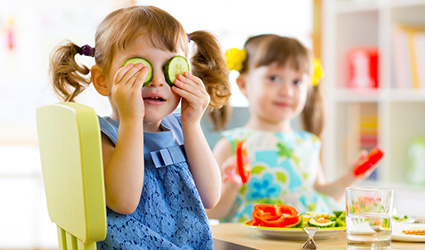Segmented Plates with Images made Kids Eat More Veggies
August 15, 2018
Source: MedPageToday
 944
944

A longitudinal study found that children in preschool consumed greater amounts of vegetables when their plates were divided and printed with pictures of fruits and vegetables.
Children took 13.82 grams more vegetables from printed plates per day than when they ate from plain white plates, and consumed 7.54 grams more, reported Emily Melnick, MPH, and Meng Li, PhD, both of the Department of Health and Behavioral Sciences at the University of Colorado Denver.
"I think the approach of using nudge methods to change what people eat is really important and there has been a lot of research on it in the general population, but there is little on how that affects kids," Li said. "If you think about what people eat and their early habits, the exposure kids have to food is really impactful in their adult behavior long-term."
There were 3 school days observed in a 1-week duration at two separate time points, and involved 235 children from 18 classrooms in Arvada, Colorado. The children were equally grouped in boys and girls and were of an average age of 3.8 years.
Children used white plates in the base duration. The intervention was conducted after 4 weeks, wherein children used the segmented plates with images. During the intervention, researchers gave an introduction to the plate to explain to the kids that the images on their plates were fruits and vegetables. The lunch menus remained unchanged each day.
Before and after consumption, the children's plates were weighed, and an average was calculated for the quantity of food taken and consumed. The intervention group saw the maximum effect on the second day when the lunch menu was devoid of fruit and included cucumbers and carrots.
By DduRead more on
- Things to Know before Buying Newborn Baby Incubators March 31, 2022
- Highly Resistant Food Poisoning Bug Responds to Antibiotics September 6, 2018
- Smartphone Based Diagnosis to Identify Mosquitoes Transmitting Infection September 5, 2018
- 3 Natural Plant Extracts Manufacturers on Drugdu.com September 4, 2018
- Shenzhen Chuanggan – Health Assessment Facility Supplier September 4, 2018
your submission has already been received.
OK
Subscribe
Please enter a valid Email address!
Submit
The most relevant industry news & insight will be sent to you every two weeks.



